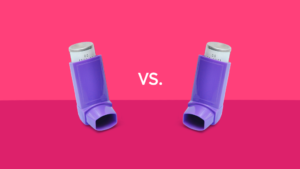Understanding Tirzepatide: Dosing, Duration in Body & More Insights
HOME | DIABETES EDUCATION | HOW LONG DOES MOUNJARO STAY IN YOUR SYSTEM: TIRZEPATIDE
If you’re interested in losing weight and want to know how long Mounjaro stays in your system, you’ve come to the right place. In this article, we’ll discuss the duration of Mounjaro, its effects on the body, and how it can help you achieve your weight loss goals. We’ll also cover the recommended dosage, potential side effects, and how to obtain a prescription. So, let’s dive in and learn more about Mounjaro and its potential for sustainable weight loss.
Key Takeaways
- Mounjaro stays in the system for approximately 30 days after discontinuation.
- The half-life of Mounjaro is 5 days.
- Individual variations may affect the time it takes for Mounjaro to leave the system.
- Missed doses should be administered within 4 days, but if it has been more than 4 days, the missed dose should be skipped.
How Long Does Mounjaro Stay in Your System
How Long Does Mounjaro Stay in Your System?
- Mounjaro remains in your system for about 30 days after discontinuation.
- Its half-life is 5 days, meaning it takes that time for 50% of the drug to be eliminated.
- Variations may affect the elimination time of Mounjaro.
- Missed doses should be taken within 4 days, otherwise, they should be skipped.
Important Information about Mounjaro:
- Mounjaro is used to reduce blood sugar levels in adults with type 2 diabetes mellitus (T2DM).
- Follow the prescribed dosage and administration instructions for best results.
- Side effects may vary from person to person.
- If it has been more than 2 weeks since the last dose, notify your medical provider.
- Store Mounjaro at room temperature and protect it from light and moisture.
These instructions are essential for the effective use of Mounjaro and minimizing side effects.
Using Mounjaro for Weight Loss
Mounjaro, primarily used for type 2 diabetes, can also be used off-label for weight loss. Alexis Mitchell, a patient who used Mounjaro for weight loss, experienced significant improvements in her health.
“I honestly had no idea how bad these things were or how much it was affecting me until the blood pressure,” the 30-year-old from Charlotte, North Carolina, told NBC News. “That was my final straw.”
That’s when her doctor suggested that Mitchell take Mounjaro off-label to help her lost weight. Almost immediately, she noticed a difference.
https://www.today.com/health/diet-fitness/woman-shares-mounjaro-weight-loss-experience-rcna124461
The medication should be injected subcutaneously into the stomach, thigh, or upper arm once a week, with the injection site rotated weekly. Following a healthy diet and exercise plan is important to maximize the effects and minimize side effects. Proper storage at room temperature, away from heat and moisture, is crucial. It is essential to follow the prescribed dose and administration instructions for safe and effective use of Mounjaro.
How Does Mounjaro Work to Help You Lose Weight
How Does Mounjaro Help You Lose Weight?
- Mounjaro is FDA-approved to reduce blood sugar levels in adults with type 2 diabetes mellitus (T2DM).
- It is an injectable medication taken in addition to diet and exercise, as prescribed by your doctor.
- Mounjaro stimulates GLP-1 and GIP receptors, increasing insulin sensitivity and secretion, while blocking liver sugar production.
- It may help with weight loss, but it is not indicated for type 1 diabetes mellitus (T1DM) or as a weight loss drug.
- Discuss the risks and benefits with your healthcare provider before taking Mounjaro.
What is the Recommended Dosage for Mounjaro
The recommended dosage for Mounjaro, a medication used to reduce blood sugar levels in adults with type 2 diabetes mellitus, is as follows:
- The most commonly prescribed doses are 2.5mg/0.5ml, 5mg/0.5ml, 7.5mg/0.5ml, 10mg/0.5ml, and 12.5mg/0.5ml single-dose prefilled pens.
- The initial dose is 2.5 mg subcutaneously (SC) once a week for four weeks, then 5 mg SC once a week.
- Additional glycemic control can be achieved by increasing the dose in 2.5-mg increments after four weeks.
- The maximum dose is 15 mg SC once a week.
- For weight management, the initial dose is 2.5 mg SC once a week, gradually increasing to a maintenance dose of 2.5 mg.
Common side effects of Mounjaro include injection site reactions, hypersensitivity reactions, severe hypoglycemia, abdominal pain, dyspepsia, and fatigue. It is contraindicated with certain medications and in people with pancreas or kidney problems, gastroparesis, or a history of diabetic retinopathy. Pregnant or breastfeeding women should consult their healthcare provider.
It is important to use Mounjaro exactly as prescribed by your doctor. If you miss a dose, follow the instructions provided by your healthcare provider. The half-life of Mounjaro is 5 days, and it typically stays in the system for about 30 days after discontinuation.
Advantages of Mounjaro:
- Reduces blood sugar levels in adults with type 2 diabetes mellitus
- Improves glycemic control
- Stimulates GLP-1 and GIP receptors
Disadvantages of Mounjaro:
- Common side effects include injection site reactions, hypersensitivity reactions, severe hypoglycemia, abdominal pain, dyspepsia, and fatigue
- Contraindicated with certain medications and in people with pancreas or kidney problems, gastroparesis, or a history of diabetic retinopathy
Common Side Effects of Mounjaro
Common Side Effects of Mounjaro:
- Nausea
- Diarrhea
- Decreased appetite
- Vomiting
- Constipation
- Dyspepsia
- Abdominal pain
Serious Side Effects:
- Allergic reactions
- Pancreatitis
- Severe stomach problems
- Eye side effects or vision changes
- Thyroid tumor symptoms
- Gallbladder problems
- Low blood sugar
Precautions:
- Inform healthcare provider if you have pancreas or kidney problems, gastroparesis, digestive issues, or a history of diabetic retinopathy.
- Pregnant or breastfeeding women should discuss risks and benefits with their healthcare provider.
- Regular appointments and tests may be necessary to monitor the body’s response.
- If a dose is missed, follow healthcare provider’s instructions.
- Taking Mounjaro with other diabetes medicines may increase the risk of hypoglycemia.
It is important to be aware of possible Mounjaro interactions.
Mounjaro Interactions
Interactions with Other Medications
- Mounjaro, an injectable medication, may interact with other medications.
- It is important to discuss all medications and supplements with your healthcare provider before starting Mounjaro.
- Mounjaro may interact with medications used to treat diabetes, heart disease, and cholesterol.
Considerations for Use
- Discuss any other medical conditions that may affect the use of Mounjaro with your healthcare provider.
- Your healthcare provider can help determine if Mounjaro is safe for you to use and if it will interact with your current medications.
Important Instructions
- Store Mounjaro in the refrigerator and follow the instructions for use.
- Properly inject and use Mounjaro to avoid potential interactions and side effects.
Note: Please consult the frequently asked questions section for more information about Mounjaro.
Frequently Asked Questions About Mounjaro
Frequently Asked Questions About Mounjaro
Do you have questions about Mounjaro and how it works? Here are some important details to know:
- How long does Mounjaro stay in your system?
- Mounjaro stays in the system for about 30 days after discontinuation. The half-life of Mounjaro is 5 days.
- What are the effects of Mounjaro?
- Mounjaro is used to reduce blood sugar levels in adults with type 2 diabetes. It stimulates both the GLP-1 and GIP receptors, leading to increased insulin secretion and sensitivity to insulin.
- What is the dosage and administration of Mounjaro?
- Mounjaro is a single-dose prefilled pen that is injected subcutaneously into the stomach, thigh, or upper arm once a week. It is important to follow the prescribed dosage and administration instructions.
- Are there any precautions to be aware of?
- Yes, it is important to inform your healthcare provider about any pancreas or kidney problems, gastroparesis, or retinopathy. It is also important to discuss any pregnancy, breastfeeding, or birth control pill use.
Understanding the duration, effects, and qualifications of Mounjaro is crucial. Taking the time to research and ask questions can help you make informed decisions about your health.
The Cost of Mounjaro Pens and Doses
The cost of Mounjaro pens is approximately $450, while a dose of Mounjaro costs about $60. However, these prices may vary depending on factors such as insurance coverage and the pharmacy you choose. It’s important to note that Mounjaro is not indicated for the treatment of type 1 diabetes mellitus or as a weight loss drug. It is an injectable medication that is used in conjunction with diet and exercise to manage type 2 diabetes mellitus. To determine eligibility for Mounjaro, you can take a free 3-minute quiz. If you have more questions about the cost of Mounjaro or how to obtain it, it’s best to consult your healthcare provider.
Tirzepatide – The Active Ingredient in Mounjaro
The active ingredient in Mounjaro is tirzepatide. Tirzepatide is a medullary thyroid hormone-receptor agonist that improves glycemic control in people with type 2 diabetes. It stimulates the GIP and GLP-1 receptors, increasing insulin secretion and sensitivity, while also blocking the liver from producing sugar. Mounjaro is safe and effective when used with diet and exercise for type 2 diabetes. However, it is not for people with type 1 diabetes and those taking birth control pills should avoid it. Consult your doctor before starting Mounjaro to ensure it is suitable for you.
Typical Mounjaro Dosage for Weight Loss
Typical Mounjaro Dosage for Weight Loss
- Mounjaro is prescribed in doses ranging from 2.5mg to 15mg for weight loss, depending on individual needs.
- The goal is to find the smallest dosage that controls blood sugar levels, taking into account factors like age, medical history, and other medications.
- Mounjaro is injected once a week under the skin of the upper arm, abdomen, or thigh, with the injection site rotated each time.
- If a dose is missed, follow the instructions provided by your healthcare provider.
- Common side effects of Mounjaro include nausea, vomiting, diarrhea, and decreased appetite.
- Higher doses may result in more weight loss but could also have more side effects.
- Mounjaro is not a weight loss drug, but it helps reduce blood sugar levels in adults with type 2 diabetes mellitus.
- It should be taken alongside a healthy diet and exercise plan for best results.
Dealing with Mounjaro Side Effects
- Mounjaro side effects: Be aware of potential side effects associated with Mounjaro.
- Rare side effects: Medullary thyroid carcinoma, multiple endocrine neoplasia syndrome type 2, and endocrine neoplasia syndrome type 4.
- Consult your doctor: If you have these conditions, consult your doctor to determine if Mounjaro is safe for you.
- Common side effects: Nausea, abdominal pain, and diarrhea. Stop taking Mounjaro and seek medical help if you experience these.
- Other side effects: Fatigue may take time to improve. Discuss any side effects with your healthcare provider for appropriate treatment.
Getting and Taking Mounjaro Pens
To start using Mounjaro, you’ll need a prescription and the necessary pens for administration. Here’s what you need to know:
-
Days of the Week: Take Mounjaro at the same time each week, preferably on the same day. If you miss a dose, skip it and take the next dose at the usual time.
-
Timing Your Dose: Administer Mounjaro within 4 days of a missed dose. If more than 4 days have passed, skip the missed dose and take the next dose at the usual time.
-
Mounjaro Prescription: Discuss Mounjaro with your doctor and inquire about savings programs. Inform your doctor about any allergies or medical conditions.
-
People Taking Mounjaro: Mounjaro is approved for adults with type 2 diabetes mellitus. It is used alongside diet and exercise to improve glycemic control.
-
Mounjaro Options: Commonly prescribed doses of Mounjaro include single-dose prefilled pens with the following strengths: 2.5mg/0.5ml, 5mg/0.5ml, 7.5mg/0.5ml, 10mg/0.5ml, and 12.5mg/0.5ml.
Mounjaro for Sustainable Weight Loss
Research has shown that taking Mounjaro regularly can help promote sustainable weight loss. The FDA approved Mounjaro for weight loss in addition to its original use for Type 2 diabetes. Mounjaro helps regulate appetite and control food intake, and has been shown to reduce body weight in clinical trials. The effects of Mounjaro may vary from person to person. If you have questions about Mounjaro, a free 3-minute quiz is available to determine eligibility for treatment.
- Mounjaro stays in the system for about 30 days after discontinuation, with a half-life of 5 days.
- If a dose is missed, it should be administered within 4 days.
- Mounjaro delays gastric emptying, so it is best to freeze the medication to prevent spoilage.
The approval of Mounjaro for weight loss provides new hope for those struggling with weight loss. Its mechanism of action and potential benefits offer a new tool for healthcare professionals. However, it is important to be aware of the potential side effects and discuss them with a healthcare provider before starting treatment. With the help of Mounjaro, individuals can now take an active role in their journey to sustainable weight loss.
How to Get a Prescription for Mounjaro
To get a prescription for Mounjaro, speak with your doctor. They will assess if the medication is suitable for you. Qualify for FORM, the delivery device associated with Mounjaro, by completing a free 3-minute quiz. Mounjaro remains in the system for an average of 30 days, with a half-life of 5 days. If a dose is missed, take it within 4 days, but avoid taking two doses within 3 days. Discuss any medical conditions with your doctor before taking Mounjaro to understand potential side effects. Serious side effects include pancreatic swelling and low blood sugar. Allergic reactions are also possible. Once prescribed, you’ll receive a pen and usage instructions. The average weight loss with Mounjaro is 3.7kg over 26 weeks. Keep the Mounjaro pen in a sharps container and take the next dose on the same day every week.
How Mounjaro Can Help You Lose Weight
How Mounjaro Can Help You Lose Weight:
- Taking Mounjaro before a meal can prevent over-eating.
- Taking Mounjaro after a meal helps the body break down food more efficiently, aiding in weight loss.
- Studies show that Mounjaro users lost an average of 2.2 pounds more than non-users.
- Take missed doses promptly, as Mounjaro remains in the system for up to a month.
- Proper usage of Mounjaro can support weight loss and a healthy lifestyle.
Properly Using Your Mounjaro Prescription
To maximize the benefits of your Mounjaro prescription, follow these guidelines for proper usage and dosage:
- Take Mounjaro once a week, at the same time of day.
- Ensure you take the dose and subsequent doses the following week at the same time.
- Use the same injection site each time for administration.
Duration
- Mounjaro remains in the system for approximately 30 days after discontinuation.
- The half-life of Mounjaro is 5 days.
Effects
- Mounjaro can have varying effects from person to person.
- If it has been more than 2 weeks since your last dose, inform your medical provider.
Missed Doses
- If it has been more than 4 days, skip the missed dose.
- On average, weight loss per month after taking Mounjaro is 0.9-1.5 Kg.
Frequently Asked Questions
Is Mounjaro Safe for Pregnant and Breastfeeding Women?
Discuss the risks and benefits of Mounjaro with a healthcare provider if you are pregnant or breastfeeding. There is insufficient data on Mounjaro use during pregnancy, and no information is available on its presence in breast milk or its effects on infants or milk production.
What Other Medications Interact With Mounjaro?
Mounjaro can interact with medications such as Victoza, Trulicity, Ozempic, Toujeo Solostar, and Adlyxin. It is important to inform your doctor about all the medications you are taking to discuss the risks and benefits with your healthcare provider.
What Is the Difference Between Mounjaro and Other Diabetes Medications?
Mounjaro is a diabetes medication that stimulates both GLP-1 and GIP receptors. This leads to increased insulin secretion and sensitivity, as well as blocking the liver from producing sugar. Consult your doctor to determine if Mounjaro is suitable for you.
Can Mounjaro Be Used for Weight Loss?
Mounjaro is not intended for weight loss. It is an injectable medication prescribed for adults with type 2 diabetes mellitus to help lower blood sugar levels. By stimulating GLP-1 and GIP receptors, it increases insulin secretion and sensitivity. It should only be used under the guidance of a doctor.
What Are the Long-Term Effects of Taking Mounjaro?
Taking Mounjaro may have long-term effects on your body, including improvements in blood sugar levels. However, it can also impact your digestive system, lead to weight changes, and increase the risk of pancreatitis. It is important to discuss the potential risks and benefits of this medication with your doctor.



